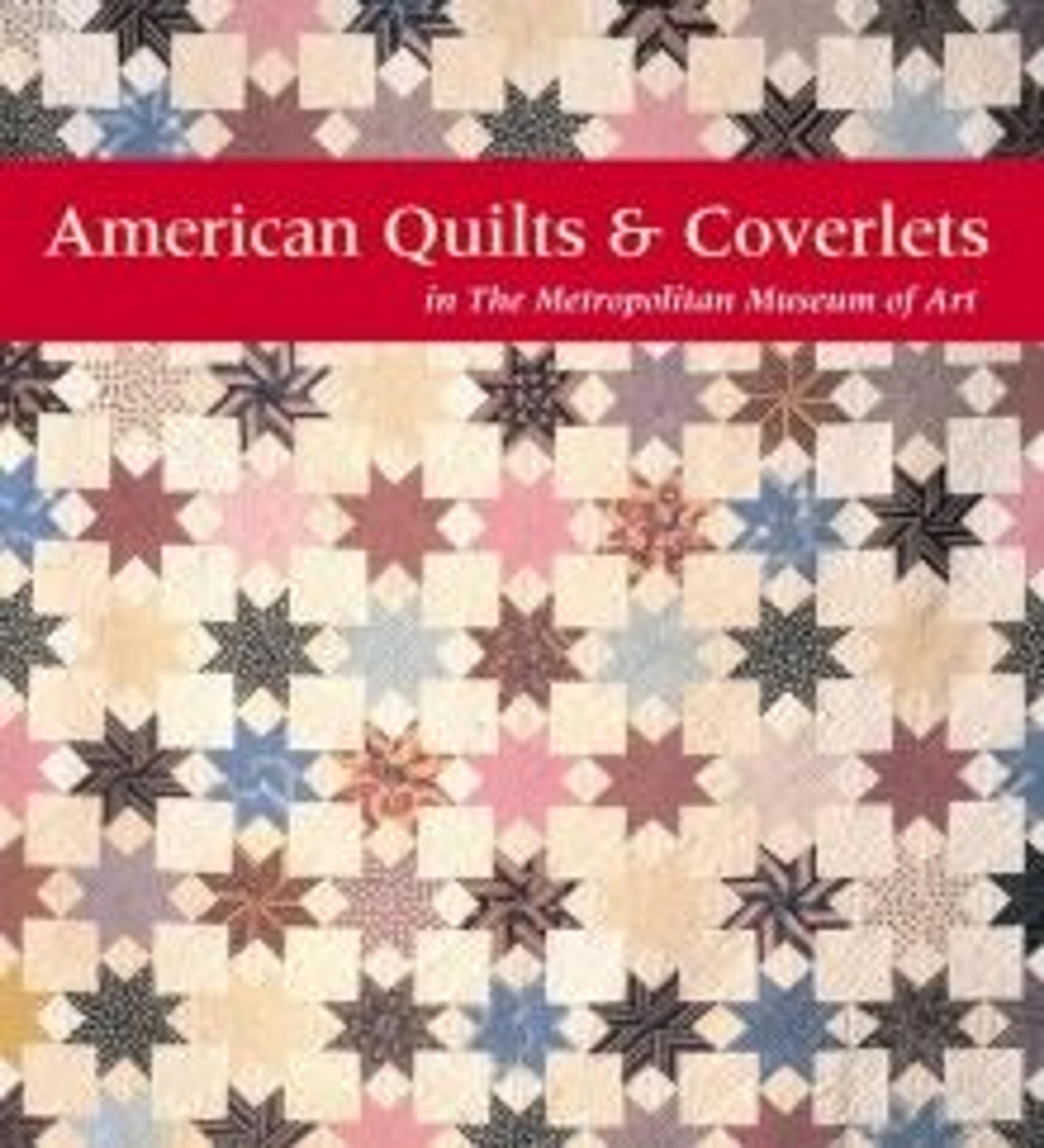Quilt, Log Cabin pattern, Pineapple or Windmill
The Pineapple variation of the Log Cabin quilt is thought to be related to eighteenth-century symbolism, in which pineapples represented hospitality. This Pennsylvania quilt, pieced of gold, red, green, and earth-brown cotton, is one of the more literal representations of the pineapple theme. In the Pineapple variation of a Log Cabin quilt, the central squares or "hearths" of each block are not a primary element in the design. The central squares of each block in this quilt are cut from the same brown fabric as the border as are some of the pineapple leaves. In the Pineapple pattern, the central square is not surrounded by four "logs" of fabric, but rather by eight overlapping logs, both parallel with and at forty-five-degree angles to the central square's sides. This pattern, also known as Windmill Blades, can be quite dizzying when pieced with printed fabrics, but when superbly planned, as in this example, it is a pattern of great strength and energy.
Although Mennonites and Amish quiltmakers share some distinctive traditions, including a preference for solid-color fabrics and detailed, graceful quilting in the borders, there are practices that distinguish the two communities. Several features of this quilt, for example, suggest that it was likely created by a Mennonite, rather than an Amish, maker. First, Log Cabin quilts, which were accepted and admired in the Mennonite community, were rarely made by the Amish. Second, it is made completely of cotton and uses a bright color palette, including a golden yellow, which is more typical of Mennonite quilts. The Pennsylvania Amish usually made quilts that were predominantly wool and favored more subtle shades. Mennonites continue to share many beliefs with the Amish but are not as intent upon keeping their communities firmly separated from the outside world, and they do not believe in shunning those who may have strayed from the faith. Mennonite quilt makers from Pennsylvania have kept closer ties with the general Pennsylvania German community; this explains why they use a wider array of patterns and fabrics.
Although Mennonites and Amish quiltmakers share some distinctive traditions, including a preference for solid-color fabrics and detailed, graceful quilting in the borders, there are practices that distinguish the two communities. Several features of this quilt, for example, suggest that it was likely created by a Mennonite, rather than an Amish, maker. First, Log Cabin quilts, which were accepted and admired in the Mennonite community, were rarely made by the Amish. Second, it is made completely of cotton and uses a bright color palette, including a golden yellow, which is more typical of Mennonite quilts. The Pennsylvania Amish usually made quilts that were predominantly wool and favored more subtle shades. Mennonites continue to share many beliefs with the Amish but are not as intent upon keeping their communities firmly separated from the outside world, and they do not believe in shunning those who may have strayed from the faith. Mennonite quilt makers from Pennsylvania have kept closer ties with the general Pennsylvania German community; this explains why they use a wider array of patterns and fabrics.
Artwork Details
- Title: Quilt, Log Cabin pattern, Pineapple or Windmill
- Date: ca. 1900–1930
- Geography: Made in Pennsylvania, United States
- Culture: American
- Medium: Cotton
- Dimensions: 89 1/2 x 89 3/4 in. (227.3 x 228 cm)
- Credit Line: Gift of Mr. and Mrs. George M. Kaufman, 1973
- Object Number: 1973.22
- Curatorial Department: The American Wing
More Artwork
Research Resources
The Met provides unparalleled resources for research and welcomes an international community of students and scholars. The Met's Open Access API is where creators and researchers can connect to the The Met collection. Open Access data and public domain images are available for unrestricted commercial and noncommercial use without permission or fee.
To request images under copyright and other restrictions, please use this Image Request form.
Feedback
We continue to research and examine historical and cultural context for objects in The Met collection. If you have comments or questions about this object record, please contact us using the form below. The Museum looks forward to receiving your comments.
